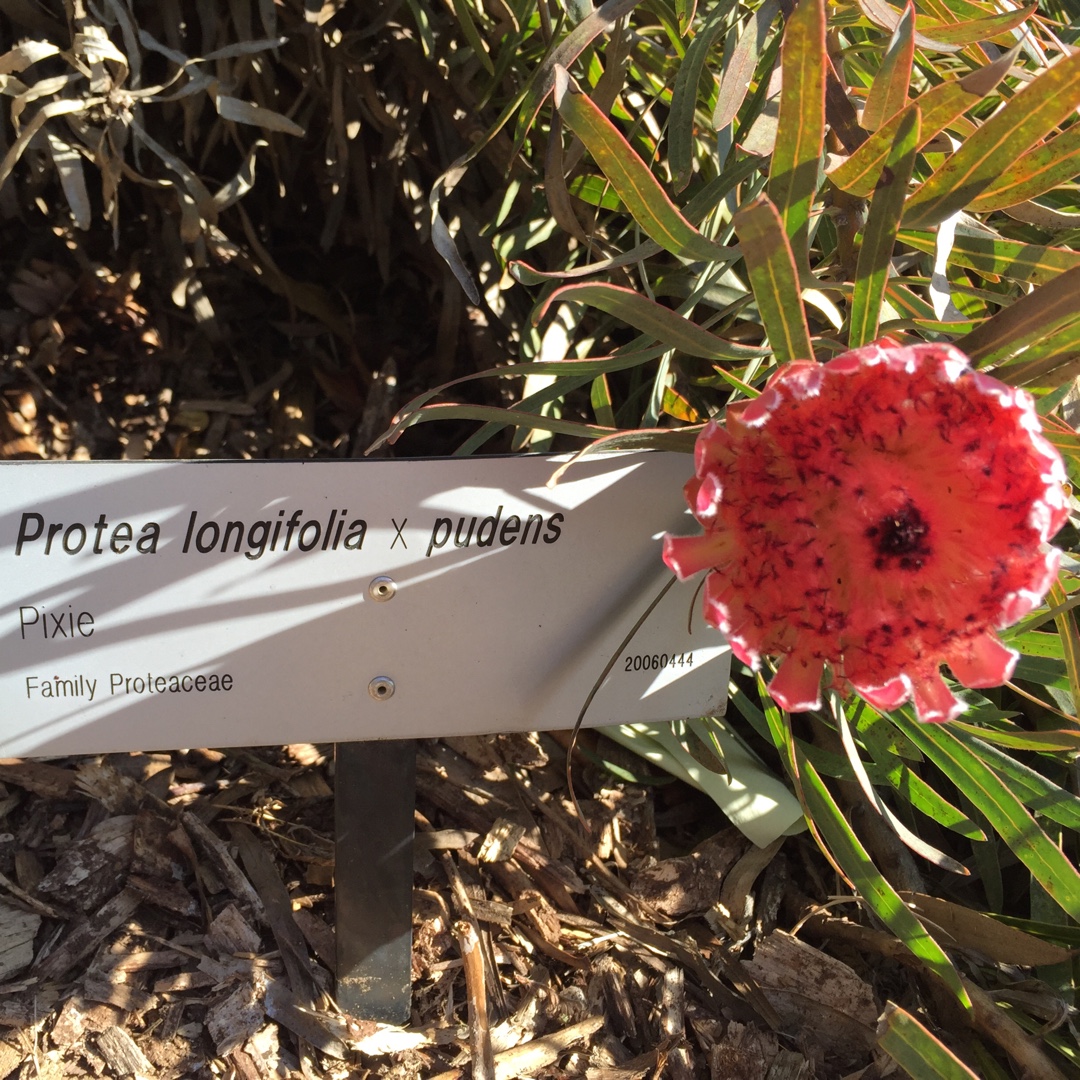
Protea longifolia x pudens 'Pixie'
Pixie Protea
Proteas - sometimes called Sugar Bush - are evergreen shrubs that bear exotic-looking large blooms. Prefers well drained, acidic soil that is not too heavy. These Australian natives will die if their root system becomes waterlogged. They are not hardy and must be offered winter protection if grown in colder temperate climates. Most often, in these regions they are grown in containers being moved outside only in the warmer months. Indoors, good ventilation and air circulation is essential.
Contributed by @mypottingbenchblog
-
Full sun
-
Very little water
-
Not Frost hardy
-
Light and free draining
Common name
Pixie Protea
Latin name
Protea longifolia x pudens 'Pixie'
type
Flowering shrubs or trees
family
Proteaceae
ph
3.0 - 5.5 Acid - Neutral
Plant & bloom calendar
-
Best time to plant
full grown dimensions
 1.50 M
1.50 M
1.50 M
1.50 M
Protea longifolia x pudens 'Pixie'
Proteas - sometimes called Sugar Bush - are evergreen shrubs that bear exotic-looking large blooms. Prefers well drained, acidic soil that is not too heavy. These Australian natives will die if their root system becomes waterlogged. They are not hardy and must be offered winter protection if grown in colder temperate climates. Most often, in these regions they are grown in containers being moved outside only in the warmer months. Indoors, good ventilation and air circulation is essential.
Planting indoors
From Early Spring TO Early Spring
If proteas are grown in containers add crocks to the bottom of them to improve drainage. Compost needs to be well drained and acidic. A mixture of peat, bark, grit and polystyrene beads is ideal. The essential bit is that the compost in your container is well drained. They need full sunlight and plenty of well circulated air.
Planting outside
From Early Spring TO Early Spring
Position in full sun, preferably on a south facing slope in well drained, acidic soil which is low in nutrients. Winter protection must be provided in temperatures below 5C, especially for young, newly planted protea.









